AI Data Centres: Limitless Information, Greater Power, Bigger Risk?
Ever wondered what keeps artificial intelligence running behind the scenes? It’s not just clever algorithms; it’s the data centres powering them. But these aren’t your average server rooms. AI data centres are packed with high-performance hardware that demands far more power and cooling than traditional facilities. And that’s where things get interesting.
I’ve worked in the fire industry for over 37 years, specialising in advanced fire detection systems. My job takes me around the world, looking at how different industries protect themselves from fire risks. One of the most fascinating sectors I’ve seen evolve is the data centre industry, especially with the rise of AI and the growing need for high sensitivity early warning aspirating detection systems.
Share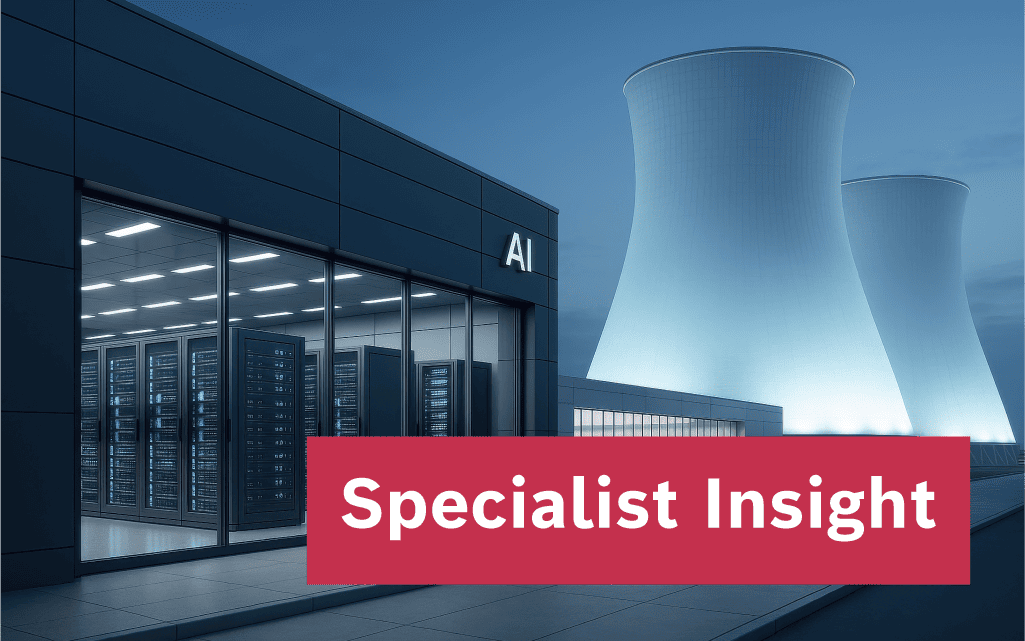
Not All Data Centres Are Alike
Unlike conventional data centres that use CPUs to run email servers or store cloud data, AI data centres rely heavily on GPUs and accelerators that generate intense heat. Training large language models or running deep learning tasks pushes equipment to its limits. Without precise cooling, temperatures can soar, leading to hardware failures or even fire. As AI adoption grows, these high-density environments are multiplying, along with their associated fire risks.
Hot and Cold – How Cooling Works
To understand where fire detection could be a problem in Data centres, we first need to understand how data centres are cooled. Hot and cold aisle containment is a cooling strategy used to optimise airflow and reduce energy consumption. Server racks are arranged in alternating rows so that the fronts face each other, forming cold aisles, and the backs face each other, forming hot aisles. Cold air from cooling units is directed into the cold aisles, where it enters the servers’ intake vents. The servers then expel hot air into the hot aisles.
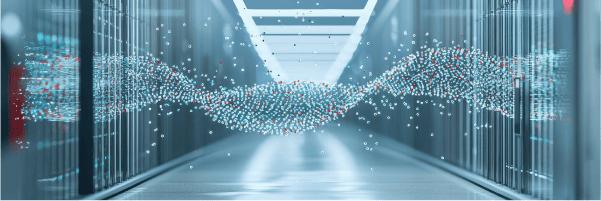
Physical barriers, such as doors or panels, are often installed to contain either the hot or cold aisle, preventing the mixing of hot and cold air. This separation ensures that cooling systems work more efficiently, maintaining stable temperatures and reducing the risk of overheating.
More Power, More Airflow – and a Hidden Problem
AI data centres can use four or five times more power than a typical site. That means stronger fans and far greater airflow through the aisles and equipment. Think of it like turning a desk fan from low to high making the air move much faster.
The issue in an AI data centre is that this increased airflow significantly dilutes smoke particles, making it harder for traditional point smoke detectors to pick up an early warning. Even some aspirating systems that use optical smoke detection technology, (usually high intensity LED or lasers), can struggle to detect a problem quickly enough in this more challenging environment.
A ‘Cloud’ Solution for Real Problems
In contrast, there is a clever way to detect potential fires in these high-airflow environments and that is ‘Cloud Chamber Technology’. And just to be clear, this has nothing to do with the digital “cloud”, but rather the same physical principle that forms clouds in the sky.
Cloud chamber detection is remarkably effective at identifying overheating components long before any smoke appears. The principle works by detecting microscopic combustion particles that are released when a component or material begins to overheat. These particles are far smaller, and by a factor of millions far more abundant, than the visible ones found in smoke, and they can appear much earlier in the combustion process.
It is the combination of the vast additional invisible particle quantities, and their free movement and buoyancy, when compared to smoke particles, that allows the cloud chamber detector to provide earlier warning than detectors ‘waiting’ for the smoke phenomenon to be produced. This performance advantage is time critical in general data centres but more so in the higher airflow environments of an AI data centre.
By continuously sampling air from multiple points along both hot and cold aisles, a cloud chamber system can highlight an issue at the very earliest stage. This gives operators valuable time to manage the event before it develops into a fire. The result is what we refer to as Very Early Warning Fire Detection (VEWFD). In mission-critical environments like AI data centres, that extra time can be the difference between a minor equipment or maintenance task, and a full-scale incident.
How Early Is Early?
To give an idea of just how early our technology can detect a potential issue, I reference a project I worked on in South Africa 2020. The site is a large data centre where several Cirrus HYBRID aspirating detectors had been installed. The Cirrus HYBRID aspirating detector combines two powerful technologies the first, ‘Cloud Chamber Detection’, for identifying microscopic combustion particles, and the second, LED based Scatter Chamber Detection, for sensing visible smoke. These two technologies work together to provide both very early warning, and then reliable confirmation of fire, reducing the risk of false alarms. This is why we call the Cirrus HYBRID an aspirating ‘Fire & Smoke’ detector, and why this unique technology has won multiple industry awards.
A couple of weeks after installation, the facilities team noticed that one of the detectors had begun registering a pre-alarm on the cloud chamber (Channel 1). This stage acts as an early alert, picking up those first combustion particles that we can sometimes smell, but not see, before smoke is visible. Interestingly, the optical smoke scatter chamber (Channel 2) hadn’t activated, which suggested something was starting to go wrong, but hadn’t yet escalated into a pre-fire condition producing even small amounts of smoke. For several days the team reset the system many times, but the pre-alarm kept returning.
The client assumed that either the detector was faulty, or set too sensitive, and was providing spurious unwanted alarms. That was until multiple Cirrus HYBRID detectors all started alarming at the same time. Our advice to the client was to be very vigilant as we believed something genuine was likely happening. We offered our Cirrus Pro Locator (portable cloud chamber aspirating detector), for them to use for more detailed inspection; however, this was not actioned by the client.
Days became weeks, and weeks became months; something was happening and being reported on several detectors simultaneously, without the client finding the true source of the alarm warnings.
After several MONTHS the client decided to heed our advice, and an engineer attended site with our Cirrus Pro Locator. Within 55 minutes of investigation the source was located! Electrical arcing was being generated from corroded heating elements within a sealed condenser inside an air conditioning humidity control system. Following the replacement of the damaged condenser all aspirating detectors returned to normal status within 30 minutes following months of raised particle level detection.
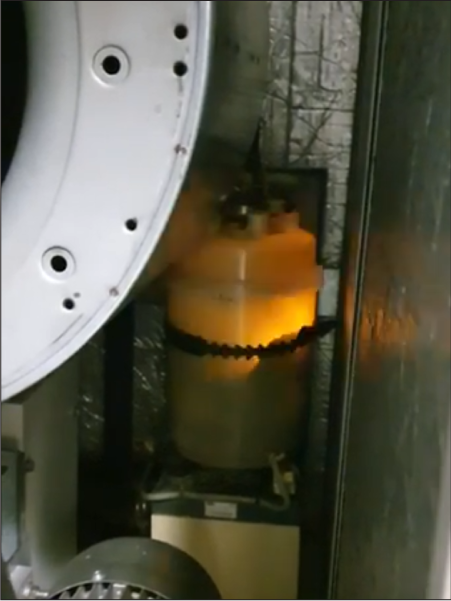
The Cirrus HYBRID detector had identified the potential fire threat long before traditional smoke detection, (including optical aspirating systems), would have done. Left unchecked, that minor arcing could have eventually become a serious fire condition and with all that may entail in a modern data centre. Thankfully, our detection technology intervened. It’s exactly this kind of very early warning that protects high-value assets and prevents costly downtime in mission-critical environments such as AI data centres.
The Lithium-Ion Factor in AI Data Centres
Working closely with the data centre industry, I’ve witnessed the rapid shift towards lithium-ion (Li-ion) batteries, particularly in facilities designed for AI workloads. These batteries have quickly become the backbone of modern Uninterruptible Power Supply (UPS) systems, ensuring high-performance servers and GPU clusters remain operational even during brief power interruptions.
It’s easy to see why operators are embracing them as they’re compact, efficient, and offer a much longer lifespan than traditional lead-acid batteries. Their ability to handle frequent charge cycles while delivering consistent power makes them perfectly suited to the 24/7 demands of AI data centres.
However, from a fire safety perspective, Li-ion batteries present distinct challenges. Each cell contains flammable electrolytes, and under fault conditions such as overcharging, mechanical damage or poor cooling, they can enter thermal runaway, which is a self-sustaining reaction that produces extreme heat, toxic gases and, in the worst cases, fire or explosion. I’ve noticed growing emphasis across the industry on enhanced thermal management, gas detection and advanced suppression systems specifically designed for battery rooms.
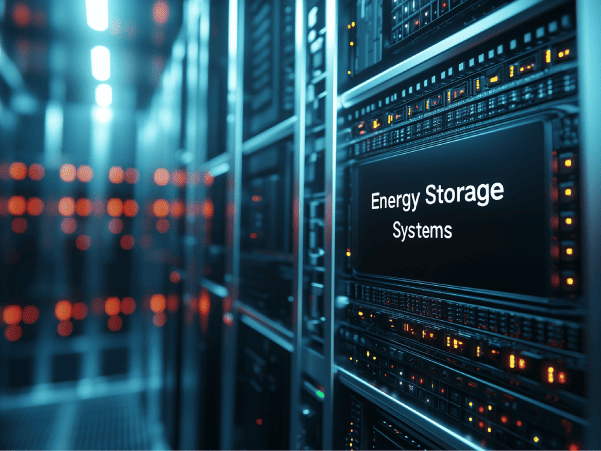
To further reduce risk, data centre designers are adopting smart Battery Management Systems and AI-driven monitoring for early fault detection. This is where Cloud Chamber Detection also shows real strength. Much like how it can identify overheating components in cooling systems, it can detect some of the earliest signs of distress within Li-ion batteries. Capturing these microscopic combustion particles before smoke develops adds a crucial layer of protection when combined with other safety measures.
Preventing Costly False Alarms in AI Data Centres
With such early and highly sensitive detection, some people understandably worry about the risk of false alarms. In environments like schools or office buildings, a false alarm is usually little more than a nuisance, such as when people evacuate briefly, or a fine for calling out the fire brigade unnecessarily.
In a data centre, however, a false alarm can have far more serious consequences. These facilities are protected by highly sophisticated fire suppression systems, often using gas or more recently High-Pressure Water Mist, to extinguish fires in server cabinets. When a suppression system is activated unnecessarily, the cost of the release alone can be significant and very disruptive.
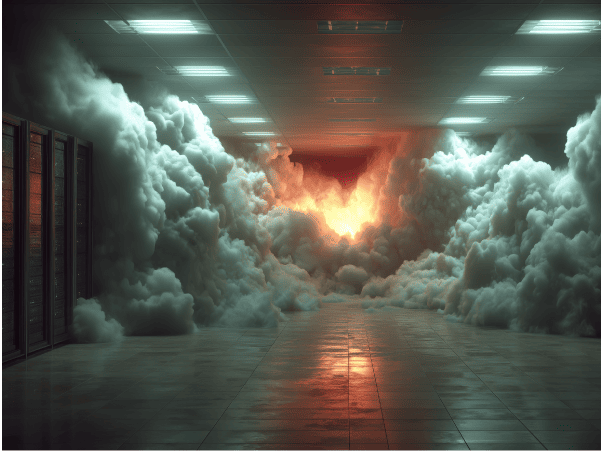
To minimise this risk, designers often implement a double-knock configuration. This approach requires two separate forms of detection to confirm a fire before any suppression system is triggered. Typically, this might involve a combination of smoke detectors, or in some cases, aspirating detection units. Both must signal an alarm before action is taken, helping reduce the likelihood of false activations.
In my work, I often go a step further to provide a robust additional layer of protection. I use a Cirrus HYBRID as a “first knock” in the system. The Cirrus HYBRID only confirms a fire to the suppression system once both its detection channels (cloud chamber and optical scatter chamber) are activated. This design significantly reduces the chance of false alarms while also retaining extremely early warning. This is something traditional aspirating systems cannot reliably do. By combining very early detection with a double-knock safeguard, we can protect high-value data centre assets without triggering unnecessary suppression, giving operators peace of mind while maintaining maximum uptime.
Where Do We Go from Here?
AI is changing everything, including the way we think about fire protection. As AI data centres evolve to support ever greater computing power, our detection systems must evolve too. Technologies like cloud chamber detection give us a vital head start spotting danger before it becomes disaster. And in a world where uptime is everything, that early warning can make a huge difference.
I’m a firm believer in as much as we as rely on the digital cloud for our everyday lives, data centres should look to cloud detection technology to protect their equipment and buildings from potential fire threats and costly, disruptive unwanted alarms and suppression system activations.
Michael Calvert
Specialist Detection Systems Manager
Protec fire and Security Group Ltd












